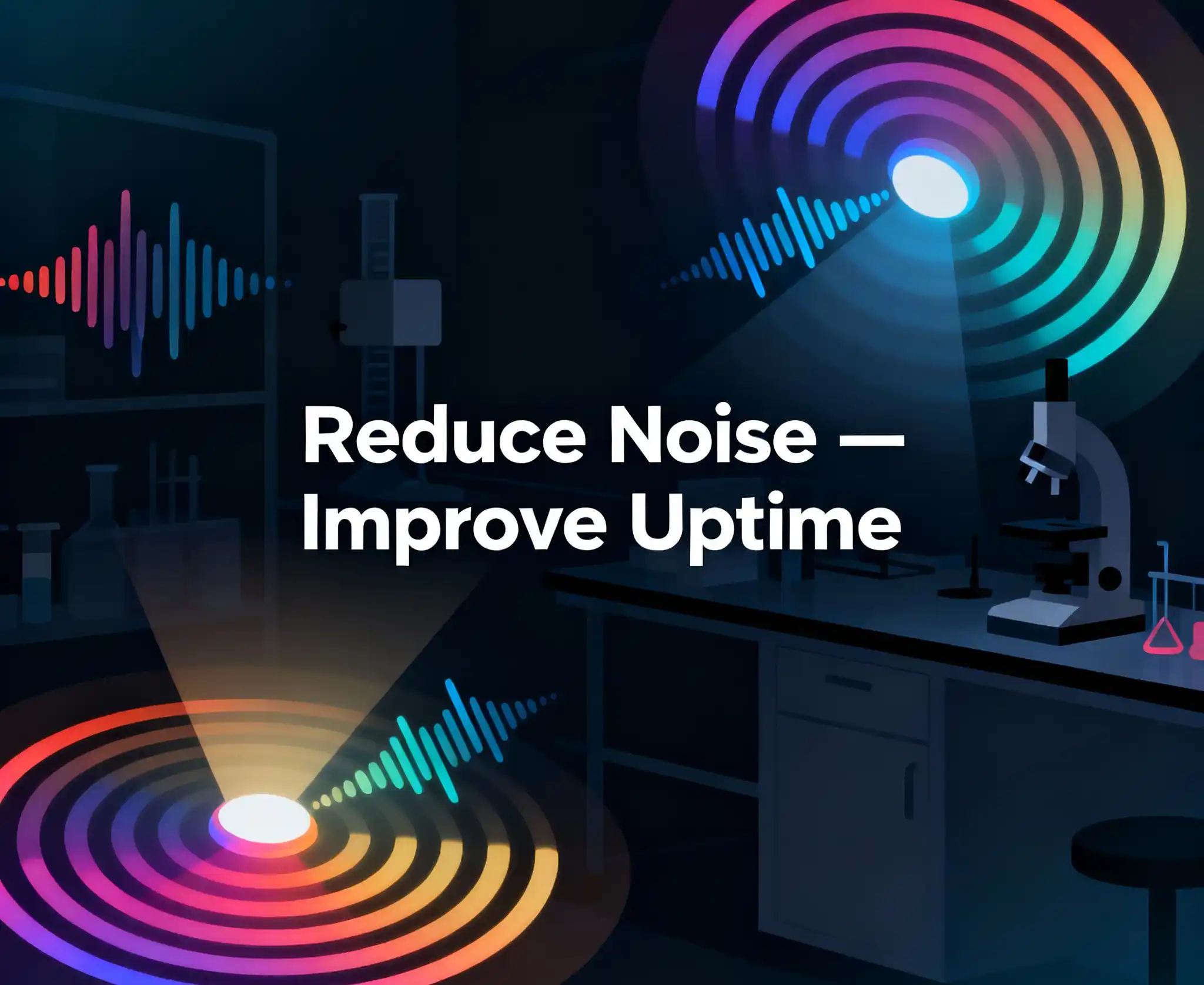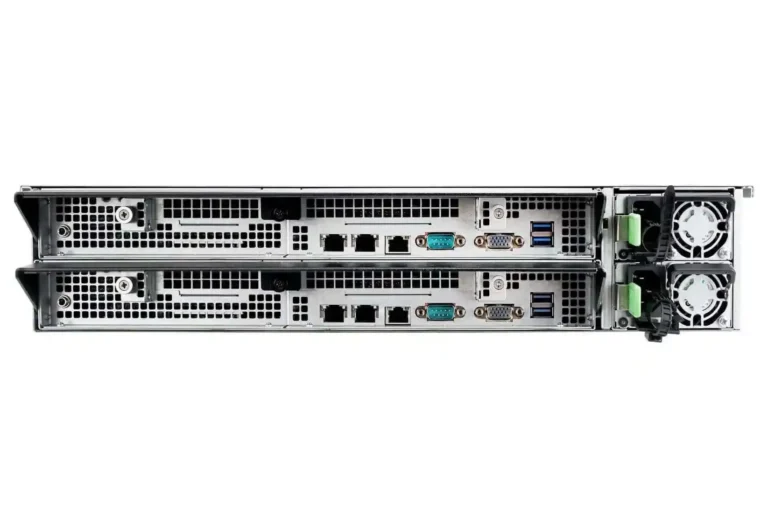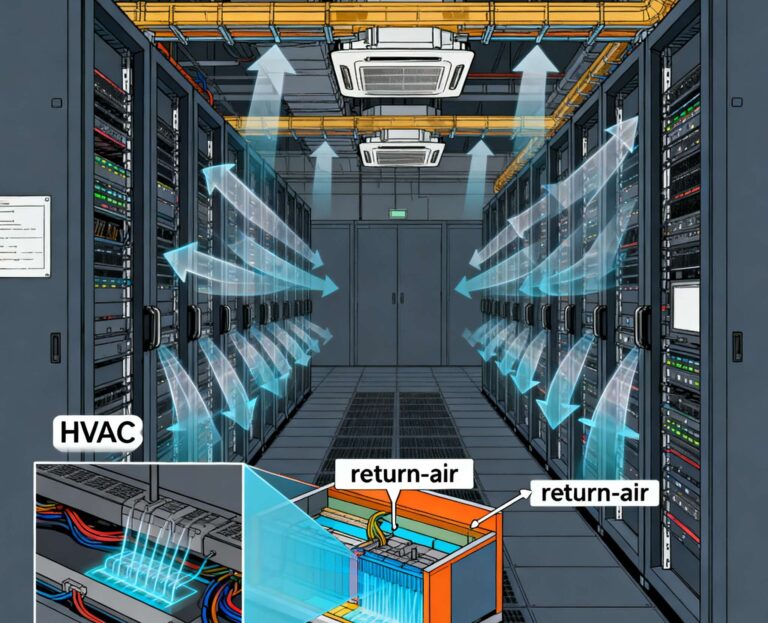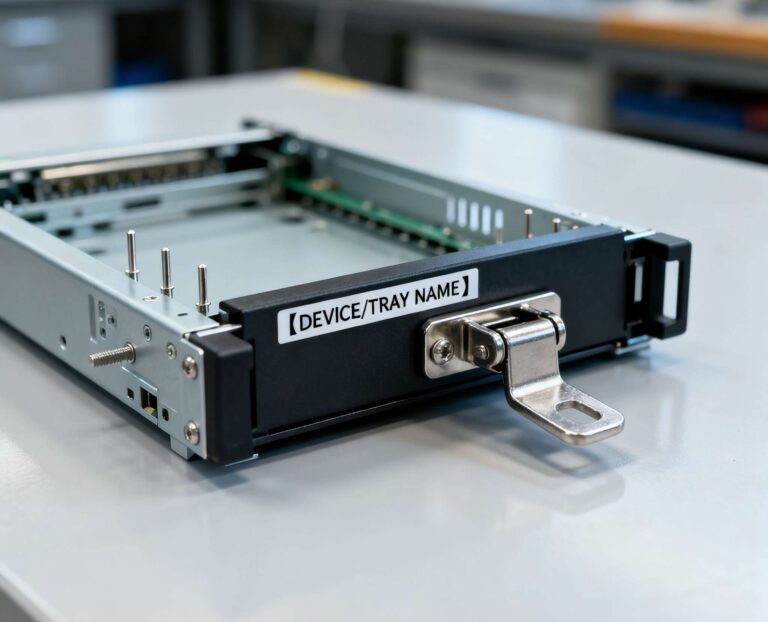You want two nodes for HA and tests. You don’t want a jet-engine next to your desk. Good news: you can keep both goals if you design noise control as a first-class spec, not an afterthought. We’ll talk airflow, placement, fan logic, and a few field tricks. We’ll also map each tip to real hardware classes from IStoneCase, because chassis choice decides the ceiling for noise, thermals, and serviceability.
Dual-node noise basics for server rack pc case
Two nodes double the fan wall and the heat load. Dense 1U boxes scream because they’re tuned for data halls, not labs. In small rooms the intake gets starved, fans spike, and you hear it across the floor. Start with a quiet-leaning server rack pc case that lets you run larger fans at lower RPM. Tall rackmounts (4U/5U/6U) with 120 mm front fan walls keep airflow smooth while leaving space for GPUs and trays. It don’t need to be loud.
Sub-tip: don’t block the front-to-back stream with cables or random brackets. Clear wind path = fewer RPM = fewer dB.

Hardware choices for computer case server
Pick taller rackmount or atx server case
A taller enclosure lowers static pressure and lets you use bigger, slower fans. For mixed compute + storage labs, an atx server case gives you motherboard space, room for coolers, and cleaner cable runs. Less turbulence, less whine.
Separate nodes when it helps
Two small chassis are often quieter than one twin server. If the lab is tight on space, go with one GPU box and one storage-oriented computer case server instead of a single dense twin; fans won’t compound in the same shell.
Use PWM / intelligent fan control
Match fan curve to lab behavior. Labs idle a lot, then burst. With PWM fans and a balanced curve, idle stays near-silent and bursts cool down fast without staying loud. You don’t need goofy BIOS hacks—just a sane profile and temperature probes placed where heat actually lives.
Storage vibration management
Noise isn’t only air. HDDs hum. Use trays with rubber isolation, balance the array across bays, and keep a clean path in front of the drive wall. If you push lots of disks, consider a 5U/6U storage chassis so fans don’t need to scream through a crowded grill.
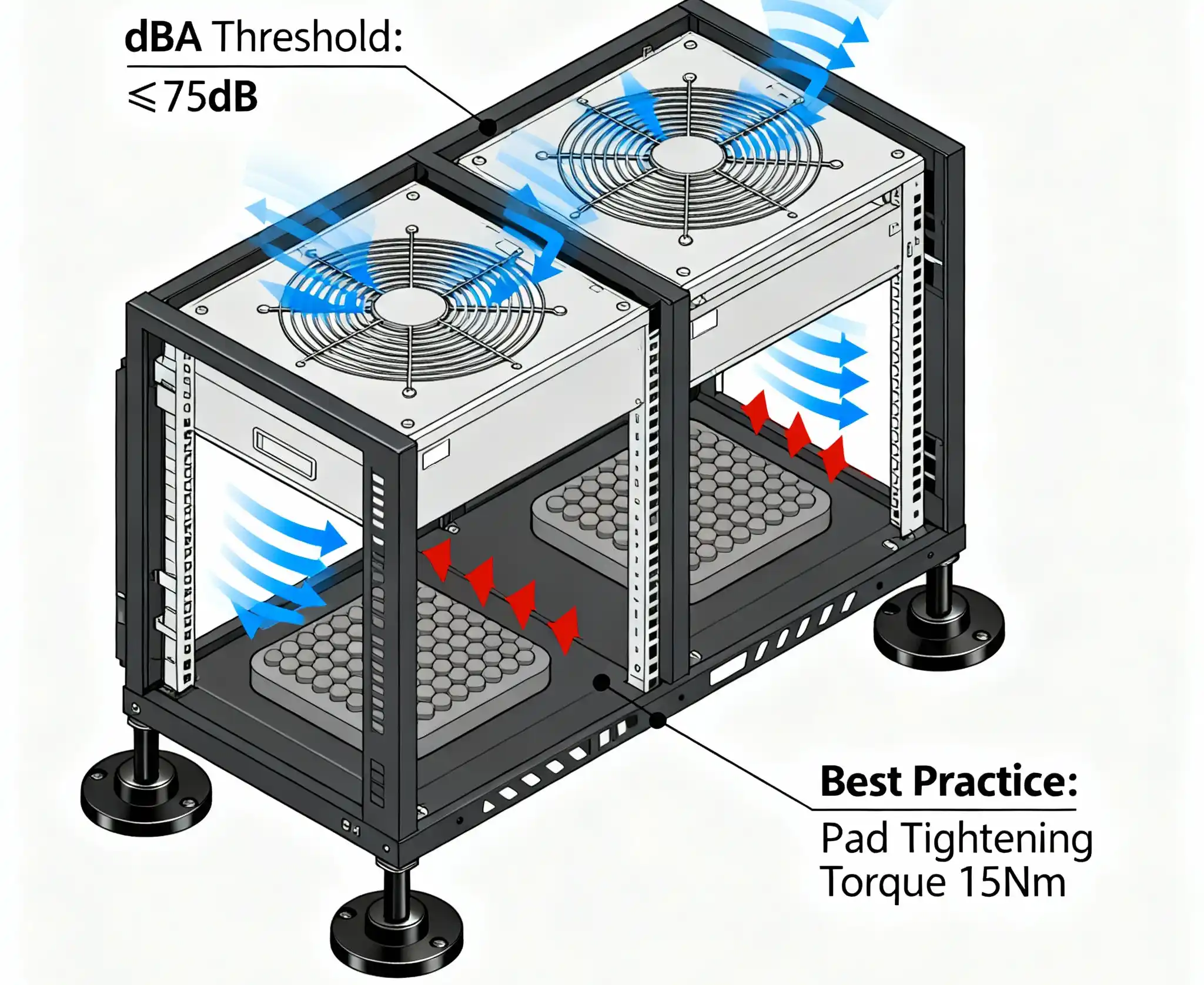
Lab deployment tips for server pc case
Placement and airflow in rack
Put the rack in a side room or enclosed cabinet with front intake and rear exhaust. Keep 10–15 cm clearance at the back. Mount louder gear lower; your ears are higher than the bottom U’s. Wall panels or a short baffle help, but always preserve straight-through airflow. Don’t overstuff; a half-empty rack that breathes is quieter than a full one that chokes.
Control and runbook
Set “balanced” or “acoustic” profiles. Document the boot behavior: fans blasting for 30–60 s is normal. Label it in the runbook so no one opens a ticket at 2 am. Monitor inlet temps, not just CPU. Inlet spikes drive fan panic.
Quorum node for dual-node stability
Two-node clusters need a vote. Add a tiny, near-silent ITX box as the third voter. Your big nodes can stay powered down during maintenance without losing quorum, which means fewer noisy reboots and fewer “fan tornado” moments. Small box, big peace.
Real lab scenarios using rackmount and wallmount cases
AI / GPU sprint corner with GPU server case
Two compute nodes run training and inference. You want airflow and ears still happy. Use a taller rackmount GPU chassis with 120 mm hot-swap fan wall; map one node per case if possible. Schedule heavy jobs after hours. Keep the front door shut during ramp-up. For procurement and branding, OEM/ODM front panels are easy with IStoneCase. Link for teams: GPU server case OEM/ODM.
Storage-heavy corner with NAS devices
One node handles hypervisor duties; the other is storage. Storage is often the loud part, so put it in a 5U/6U case with balanced trays and modular fan panels. Compute gets a calmer 2U/4U box. Tie them with 10/25G. Idle stays quiet, bursts are short. Starter anchor: server pc case.
Edge / branch / demo rack with wallmount case
Clients walk by the rack. It can’t shout. Choose a wallmount or shallow rackmount with ATX PSU and low-RPM fan wall. Add chassis rails and neat labeling so field techs can service in minutes. Consistent BOM matters for integrators—OEM/ODM saves rollout pain. Quick jump: rackmount case wholesale.
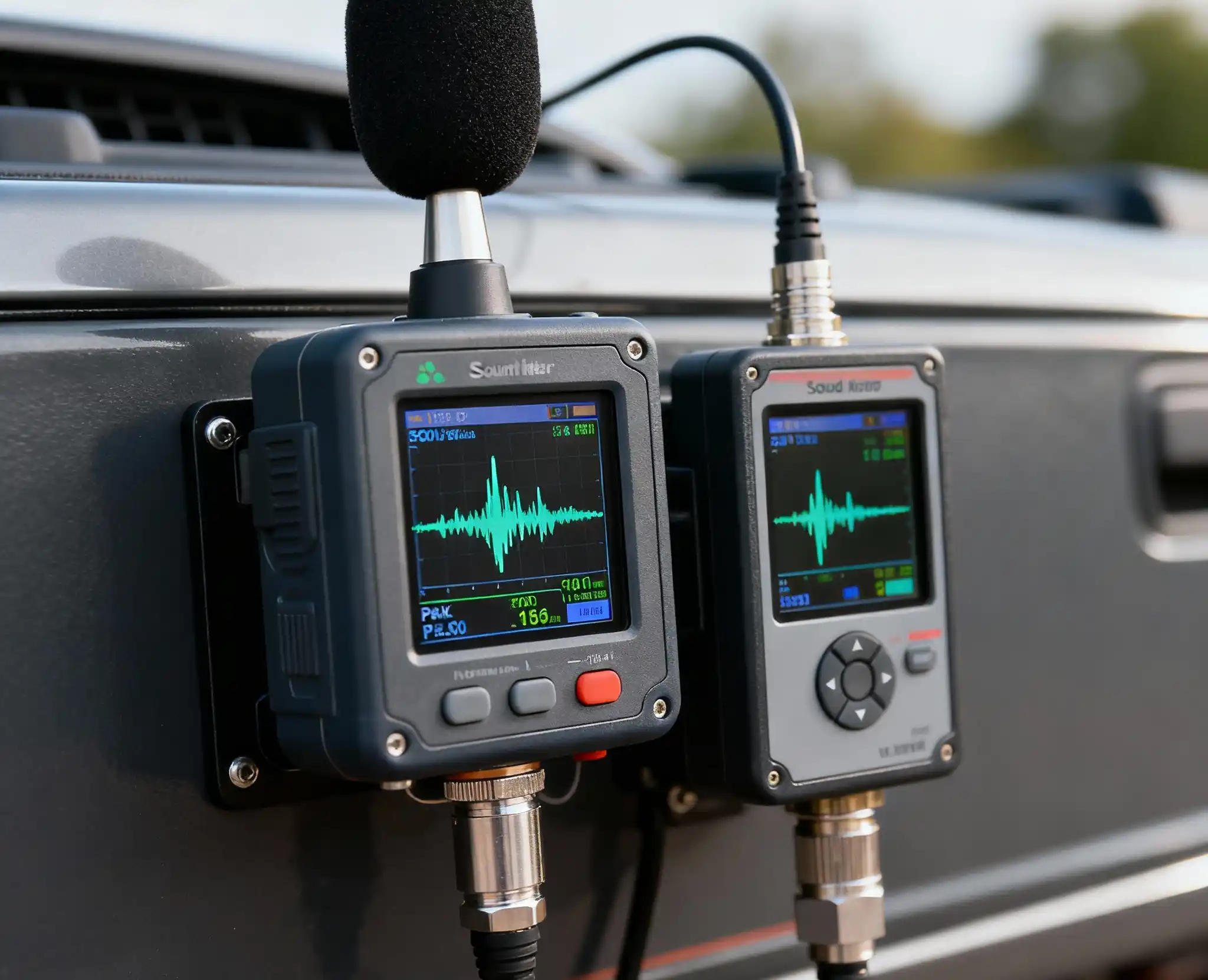
Dual-node lab: quick decision table
| Point | Why it matters | Action in practice | IStoneCase reference |
|---|---|---|---|
| Chassis height | Bigger fans, lower RPM | Choose 4U/5U/6U for compute+storage, not only 1U | IStoneCase rackmount |
| Airflow path | Prevent panic fan spikes | Keep front-to-back flow; avoid cable wall in front of fans | server rack pc case |
| Fan control | Labs idle a lot | Set balanced PWM curve, monitor inlet temps | computer case server |
| Drive vibration | Hums add up | Use isolated trays; spread bays evenly | NAS devices & trays |
| Quorum node | Avoid noisy reboots | Add tiny ITX voter to the cluster | ITX case |
| Field service | Open door = noise spike | Rails + front service, close door fast | chassis guide rail |
Keyword map & internal links for buyers
- server rack pc case — quiet-leaning tall chassis for dual-node labs
- server pc case — 2U/4U compute with clean cable space
- computer case server — compact builds for quorum or low-noise nodes
- atx server case — mainstream boards, easier acoustics
- GPU server case — airflow headroom for accelerators
- rackmount case — standardized rails and service flow
- wallmount case — neat for edge/branch demos
- NAS devices — storage without the howl
These anchors match the brand’s focus: high-quality server cases, NAS devices, and custom OEM/ODM for data centers, algorithm centers, enterprises, service providers, research orgs, and makers who bulk order.
Takeaways for dual-node systems with atx server case
Start with the chassis, not the OS. Pick a taller atx server case or a roomy rackmount, give it a straight wind tunnel, and let PWM do the rest. Separate the two nodes when it drops dB. Add a tiny third voter to avoid surprise boot storms. Document the fan blast at power-on. Then your lab stays friendly for developers, MSPs, and researchers—quiet when idle, calm under burst, and easy to roll out in batches. We dont overbuild; we right-size. And when you need bulk, branding, or custom front panels, IStoneCase has the OEM/ODM playbook ready so your next rack looks and sounds like it belongs.

